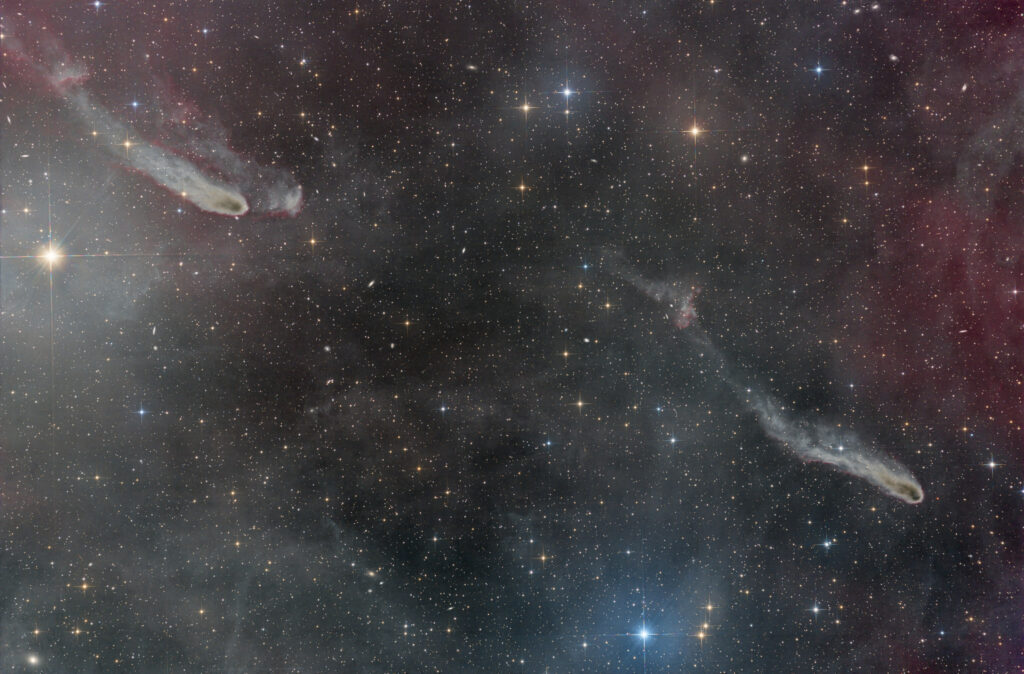
Another CG image, completed just after Christmas Day, showing CG 15 (lower right) in Puppis and CG 16 (upper left) in Carina. Two more for the growing catalog of CGs here.
More details at Astrobin coming soon.
Continue reading
Another CG image, completed just after Christmas Day, showing CG 15 (lower right) in Puppis and CG 16 (upper left) in Carina. Two more for the growing catalog of CGs here.
More details at Astrobin coming soon.
Continue reading
CG season is also rain season in Namibia, so it took a while to gather enough data for image, adding to the growing catalog of CGs here.
More details at Astrobin coming soon.
Continue reading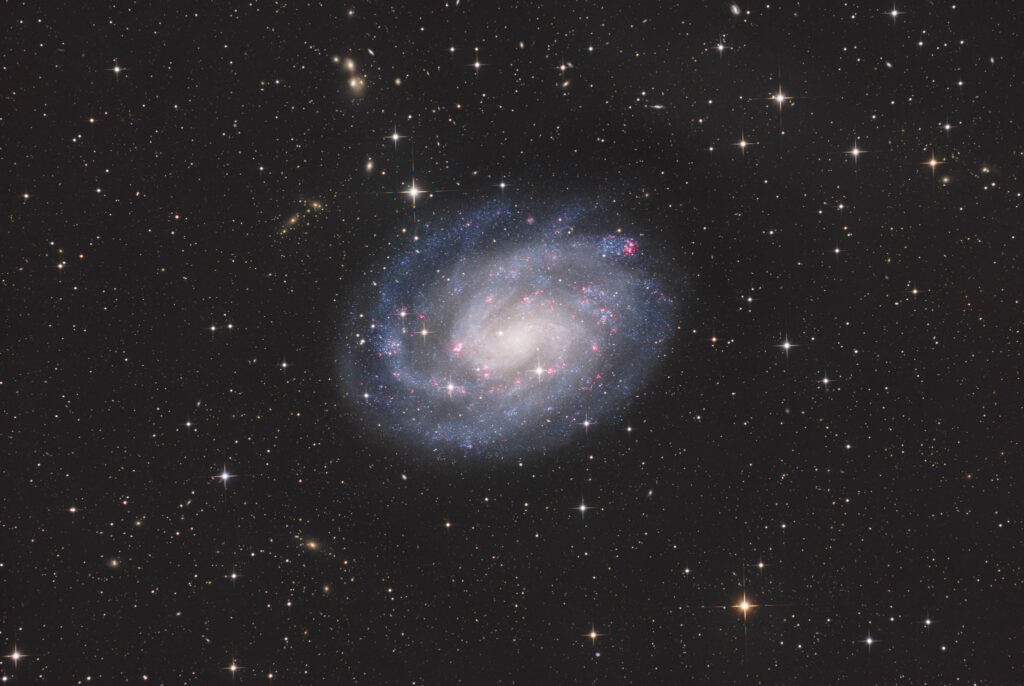
Difficult processing with these data: separating stars and galaxy with StarXTerminator doesn’t work well here, too many artefacts. So all the stretching was done with the starfull images, with just a bit of star reduction on L, to preserve the many little, mostly blue stars in the arms of NGC 300.
More details at Astrobin.
Continue reading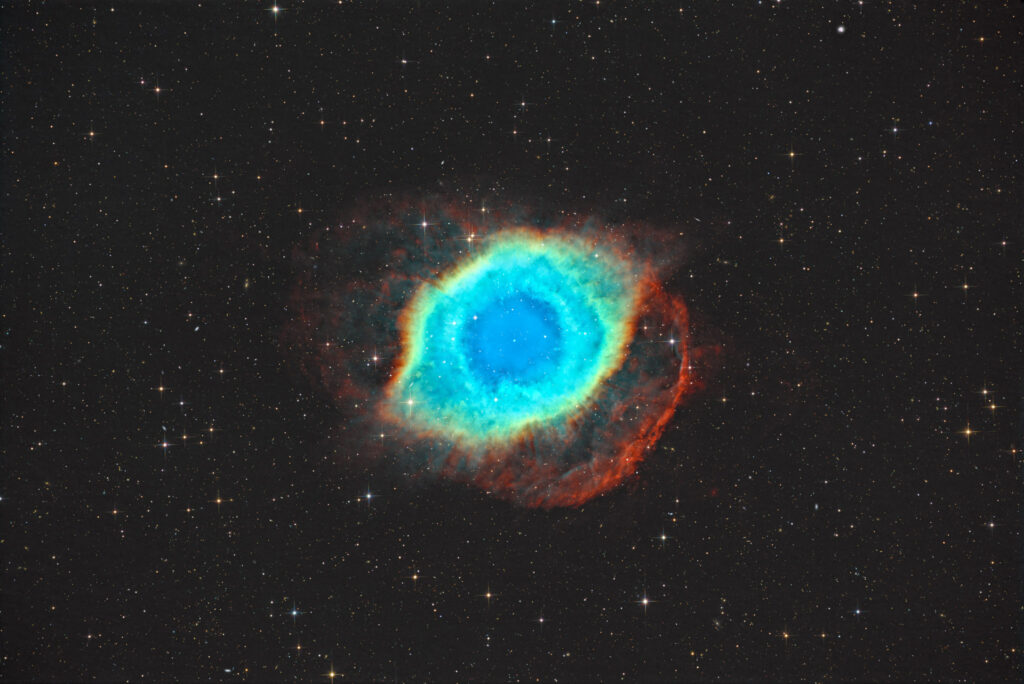
Some old narrowband data of the Helix was sitting for quite a while on my hard disk. Recently I started to adopt the “Foraxx” palette described in The Coldest Nights blog and used this technique with the SHO data, but combined both the SHO Foraxx and Bicolor Foraxx results, with a bit of RGB mixed in, and added RGB stars. Hope that the result isn’t too bad. ;-)
See an older post for a “classic” rendering of NGC 7293.
More details at Astrobin (70 % crop).
Continue reading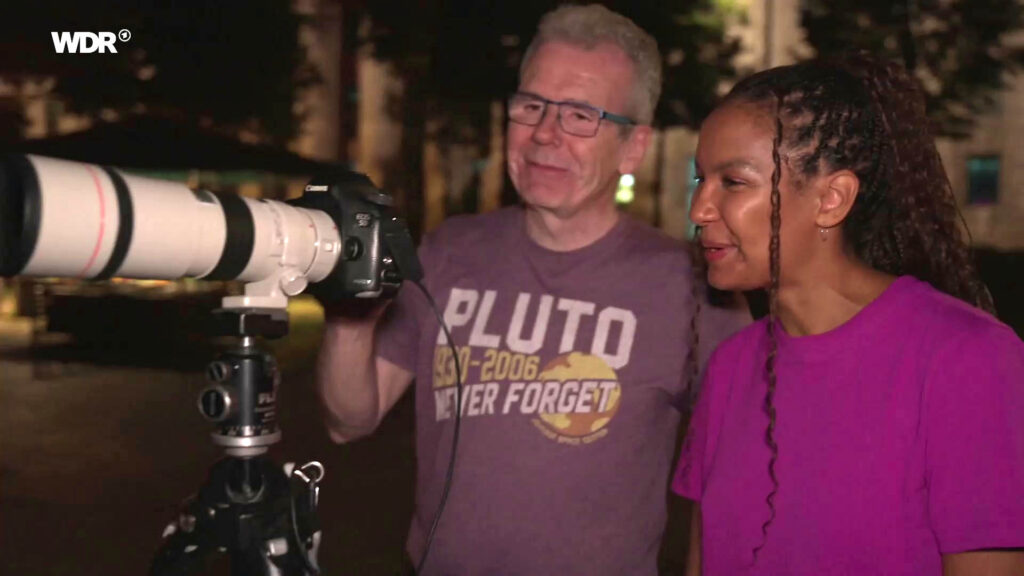
Am 9. Oktober war es dann soweit und die Quarks-Sendung “Zurück zum Mond: Der neue Wettlauf ins All” mit unserem Beitrag “Die Mondtäuschung” im WDR-Fernsehen zu sehen. Hier im Standbild mit Joana Abondo. Der Dreh mit Joana, Jakob Kneser und dem Filmteam im August hat großen Spaß gemacht.
Took a while to get this short time-lapse of the total lunar eclipse on 07 Sep 2025 online. Photographed at Frankenwerft, Cologne, Germany near central station.
Hat ein Weilchen gedauert, dieses kurze Zeitraffer-Video der totalen Mondfinsternis vom 7. September 2025 online zu stellen. Fotografiert auf der Rheinuferpromenade, Frankenwerft, Köln in der Nähe des Hauptbahnhofs.
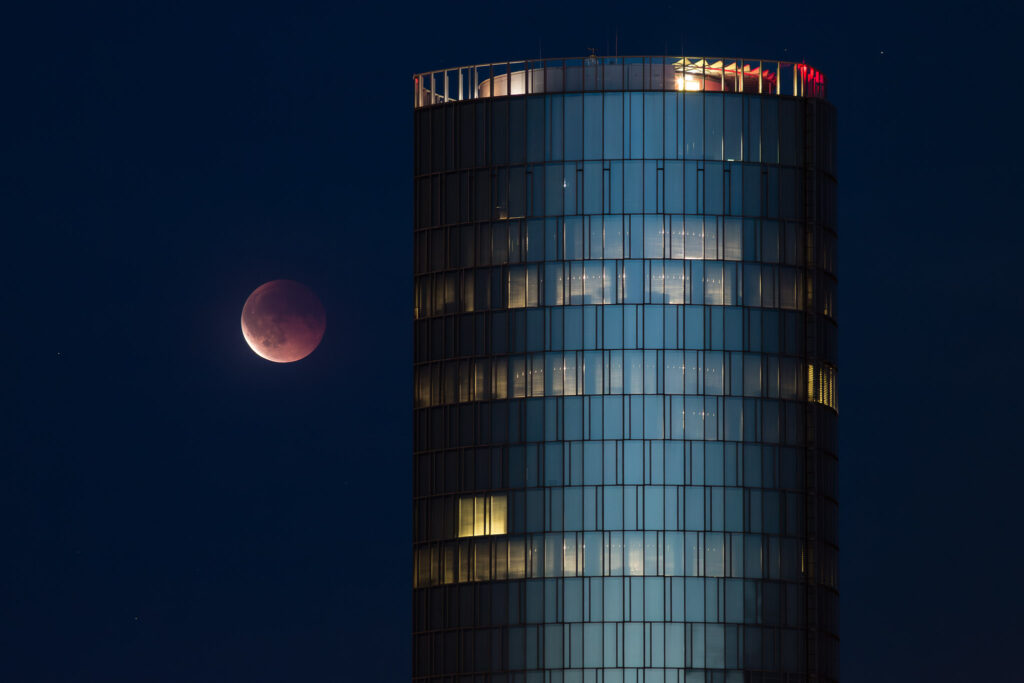
After a looong time, a total lunar eclipse was visible from Cologne, Germany. The last time I photographed a lunar eclipse was back in 2019!
Nach laaanger Zeit war endlich wieder eine totale Mondfinsternis in Köln sichtbar. Das letzte Mal habe ich eine Mondfinstern 2019 fotografiert.
Local circumstances (local time = CEST):
20:01 Moonrise
20:11 Max eclipse
20:35 First sighting in Cologne, above a layer of light cirrus clouds
20:52 End of total eclipse
21:56 End of partial eclipse
22:55 End of penumbral eclipse

[Updated image]
Has been quite a while since I last imaged this large, beautiful spiral galaxy in the southern constellation of Sculptor, NGC 253 known as the Silver Dollar Galaxy, Silber Coin Galaxy, or just Sculptor Galaxy.
A lot of H-alpha data has been used, thus the rendition is different from the DSLR attempts back in 2016.
More Details at Astrobin.
Continue reading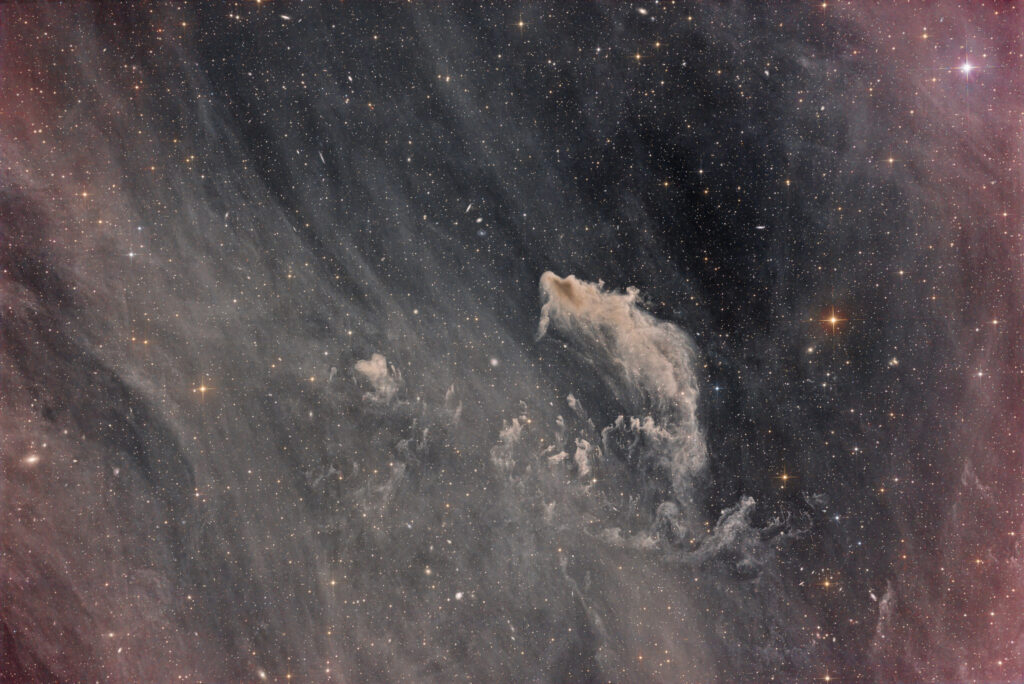
Continuing the with the cometary globules, here comes CG 11, also part of my growing catalog of CGs here at Gallery > Photography > Astrophotography > Cometary Globules.
More details at Astrobin. Also posted to Spektrum Leserbilder Astronomie.
Continue reading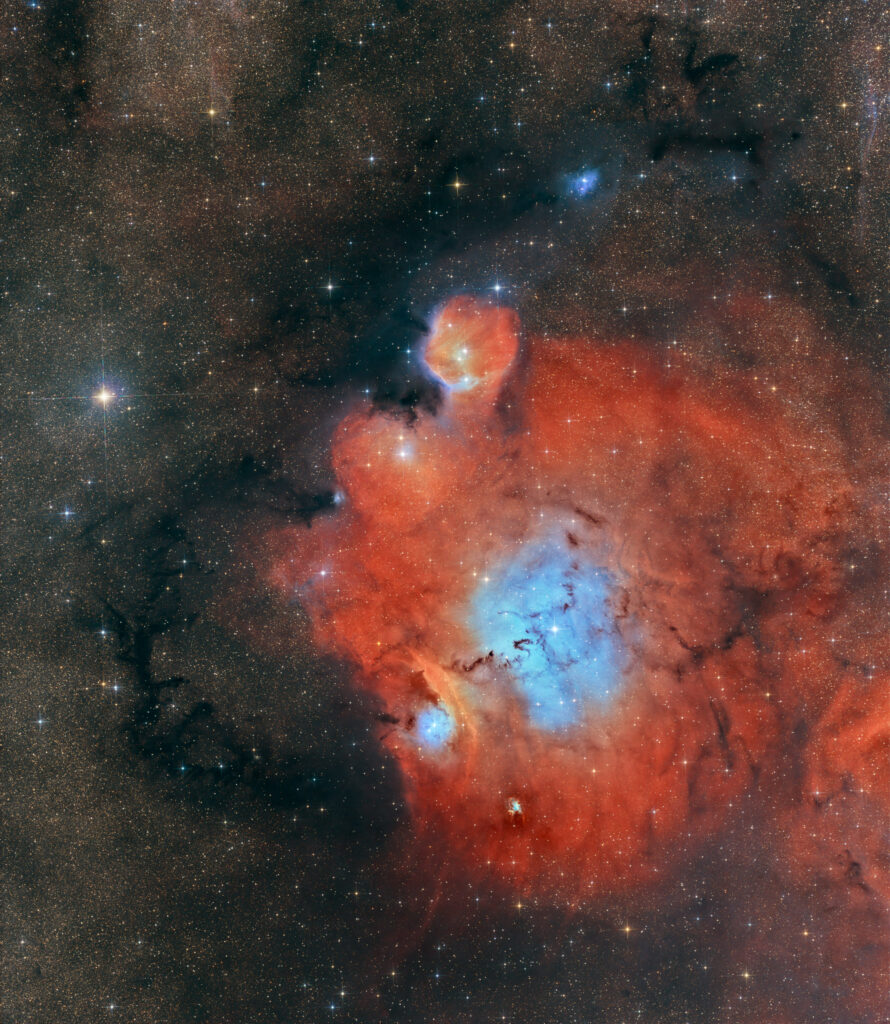
An assortment of nebulae in Sagittarius, very close to the well-photographed Lagoon, thus sort of completing the Lagoon footprint, which made me come up with this nickname.
This is a narrowband (SII, H-alpha, OIII) plus RGB image. For rendering the NB data, I used the “Foraxx” palette described in The Coldest Nights blog along with other techniques. Worked rather well, a pure SHO approach would yield a very green image. Stars are color-calibrated RGB.
Emission and reflection nebulae in this field: IC 1274/1275/4684/4685, NGC 6559
The strange object below and right of NGC 6559 is the planetary nebula PN M 1-41
(RA 18 09 30.10, DEC -24 12 26.0).
More details at Astrobin.
Continue reading